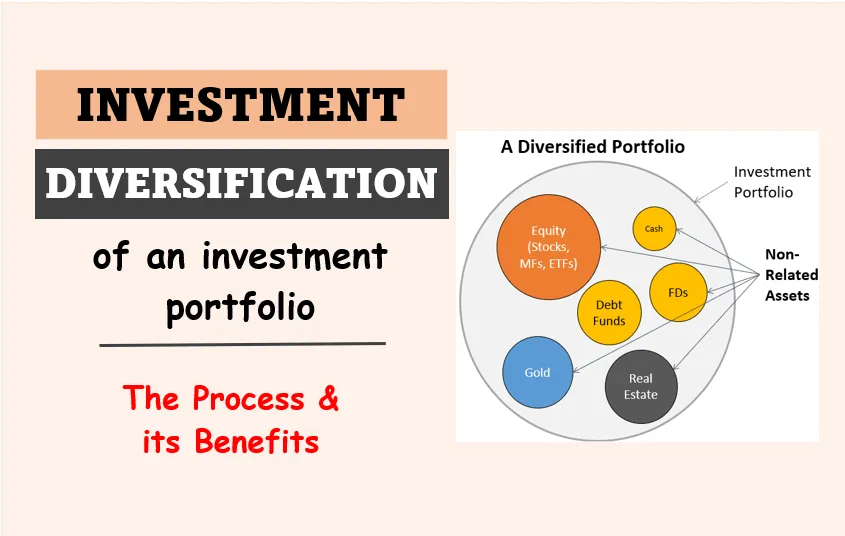Building a diversified investment portfolio is a cornerstone of successful wealth management and financial planning. A well-diversified portfolio can help mitigate risk, minimize volatility, and maximize long-term returns. In this comprehensive guide, we’ll explore the essential principles and strategies for constructing a diversified investment portfolio that aligns with your financial goals and risk tolerance.
- Understand the Importance of Diversification: Diversification is the practice of spreading your investments across different asset classes, industries, sectors, and geographic regions to reduce the impact of any single investment’s performance on your overall portfolio. By diversifying your investments, you can potentially lower your portfolio’s volatility and enhance its risk-adjusted returns over time.
- Set Your Investment Goals and Risk Tolerance: Before you start building your portfolio, it’s crucial to establish clear investment goals and understand your risk tolerance. Determine your financial objectives, such as saving for retirement, funding education expenses, or achieving specific financial milestones. Additionally, assess your tolerance for risk and volatility to ensure that your investment strategy aligns with your comfort level.
- Asset Allocation: Asset allocation is the process of determining how to distribute your investment capital among different asset classes, such as stocks, bonds, cash equivalents, and alternative investments. The optimal asset allocation strategy will depend on factors such as your investment goals, time horizon, risk tolerance, and market conditions. Generally, younger investors with a longer time horizon may have a higher allocation to equities, while older investors approaching retirement may prefer a more conservative allocation with a higher emphasis on fixed-income investments.
- Choose Diversified Investment Vehicles: Selecting diversified investment vehicles is essential for building a well-balanced portfolio. Consider investing in mutual funds, exchange-traded funds (ETFs), and index funds, which provide exposure to a broad range of asset classes and market segments. These investment vehicles offer instant diversification and are typically managed by professional portfolio managers, making them suitable options for investors seeking broad market exposure with minimal effort.
- Focus on Asset Class Diversification: Within your portfolio, aim to diversify across different asset classes to reduce concentration risk. Allocate your investment capital across equities, fixed-income securities, cash equivalents, and alternative investments such as real estate, commodities, and private equity. Each asset class has unique risk-return characteristics and may perform differently under various market conditions, helping to enhance the diversification of your portfolio.
- Rebalance Your Portfolio Regularly: Periodically review and rebalance your investment portfolio to maintain your desired asset allocation and risk profile. Market fluctuations and changes in asset values can cause your portfolio’s allocation to drift away from your target weights over time. Rebalancing involves selling overperforming assets and reallocating the proceeds to underperforming assets to restore your desired asset allocation. Regular rebalancing ensures that your portfolio remains aligned with your investment objectives and risk tolerance.
- Monitor Your Portfolio Performance: Keep a close eye on your portfolio’s performance and make adjustments as needed based on changes in market conditions, economic outlook, and your personal financial situation. Regularly review your investment holdings, monitor investment expenses, and assess the impact of taxes and fees on your portfolio returns. Additionally, consider seeking professional financial advice to help you make informed investment decisions and navigate complex market environments effectively.
Conclusion:
Building a diversified investment portfolio is a critical step towards achieving long-term financial success and realizing your investment goals. By following the principles outlined in this guide and implementing a disciplined investment approach, you can construct a well-balanced portfolio that withstands market volatility and delivers sustainable returns over time. Remember to stay focused on your objectives, remain patient during periods of market uncertainty, and continue to educate yourself to become a more informed and confident investor.

![Teejay – Fully Auto (Live) [Official Video] Teejay - Fully Auto (Live) [Official Video]](https://www.ghanasong.com/wp-content/uploads/2024/04/Teejay-Fully-Auto-Live-Official-Video-150x150.png)









